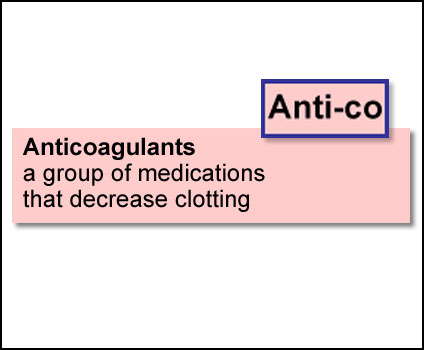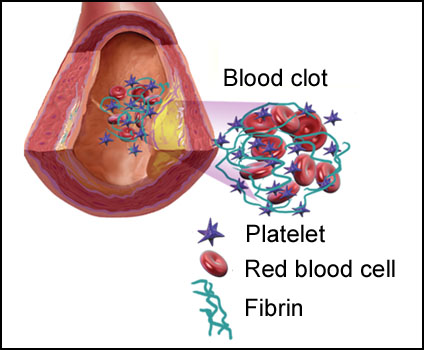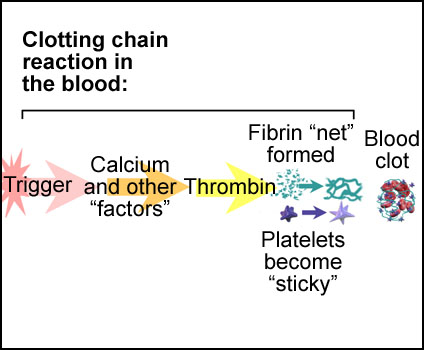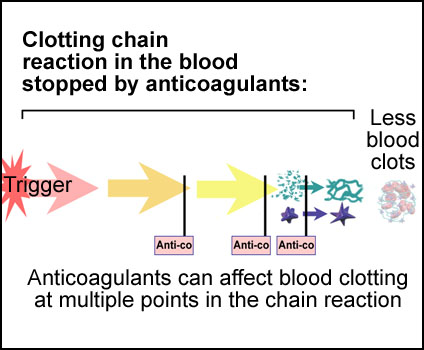
Anticoagulants
Anticoagulants are drugs that decrease the ability of the blood to clot (coagulate). Blood clotting is caused by a chain reaction initiated by a trigger. Fibrin nets and “sticky” platelets are components that form the resulting blood clot. Anticoagulants can act at different stages of the chain reaction to stop or prevent blood clotting depending on the type of drug. They are used to treat certain blood vessel, heart and lung conditions. They may prevent existing clots from becoming larger and causing more serious problems, and are often prescribed to prevent first or recurrent stroke. Also given to certain people at risk for forming blood clots, such as those with artificial heart valves or who have atrial fibrillation (AF).
Anticoagulants are sometimes called blood thinners, although they do not actually thin the blood. Some anticoagulants that are available are: Acenocoumarol, Anisindione, Dicumarol, Heparin and Warfarin.
Figure 1: Anticoagulants
Figure 2: Components of a blood clot.
Figure 3: Normal clotting chain reaction in the blood.
Figure 4: Anticoagulants can act in several places in the clotting process to reduce blood clots.
Visit Medmovie.com Website for more information.



